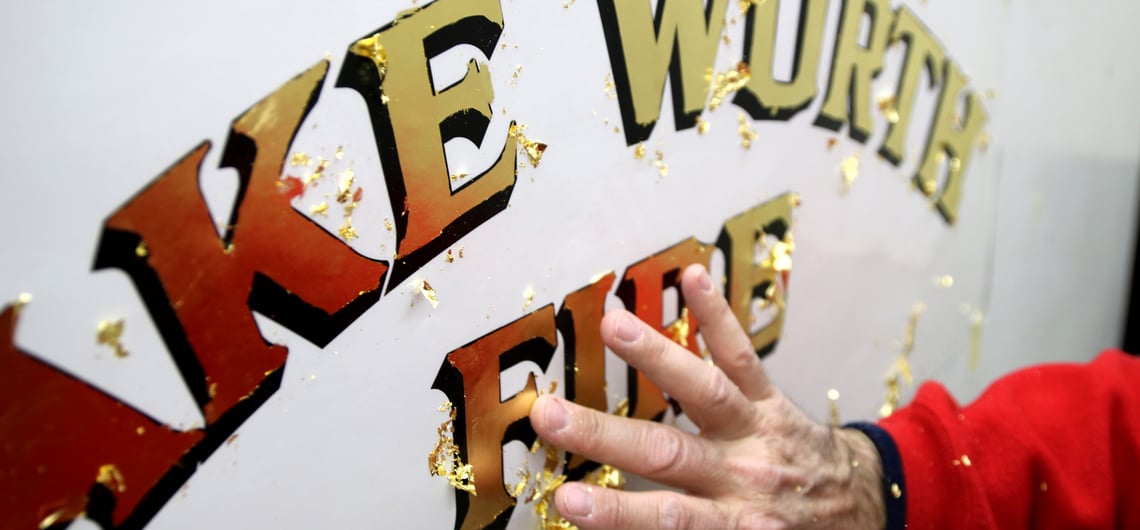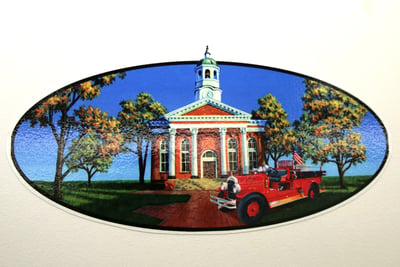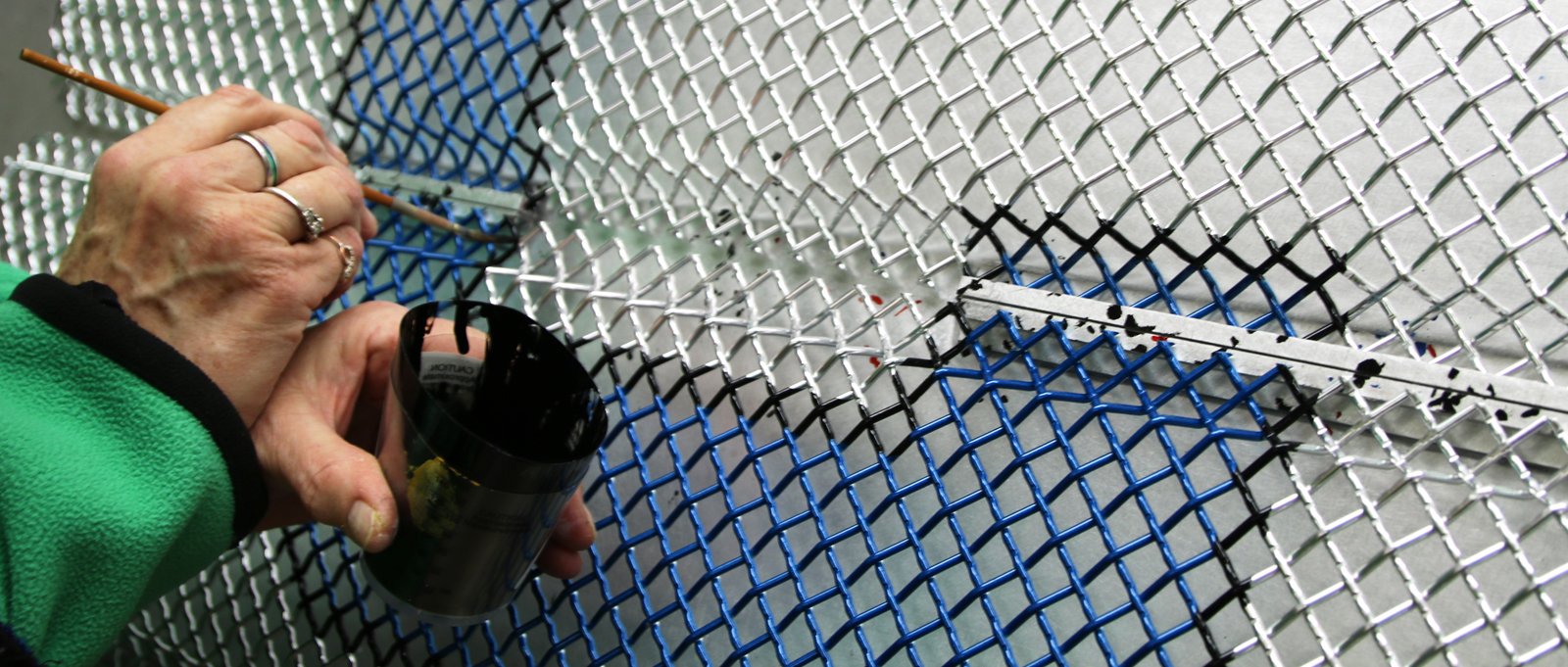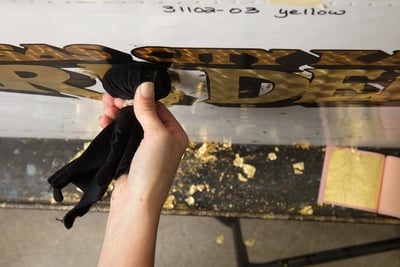 Designing and selecting fire truck graphics may seem like a secondary task compared to the main operation of assembling a fire apparatus. However, visual components of apparatus need to be well thought out during the early stages of fire apparatus design.
Designing and selecting fire truck graphics may seem like a secondary task compared to the main operation of assembling a fire apparatus. However, visual components of apparatus need to be well thought out during the early stages of fire apparatus design.
Why are fire truck graphics important?
Fire truck graphics provide a critical safety feature in accordance with the National Fire Protection Association (NFPA)1900 Section 4.21, and also present fire departments with opportunities for both differentiation and customization. An individual fire department’s fire truck graphics and images are often a strong representation of its pride and commitment to the local community.
There are many considerations your fire department should keep in mind during the graphics selection process.
How Are Fire Truck Graphics Used and Why Are They Important?
 Fire apparatus graphics are multi-functional, providing department personalization while at the same time, meeting NFPA visibility requirements.
Fire apparatus graphics are multi-functional, providing department personalization while at the same time, meeting NFPA visibility requirements.
The NFPA standards for fire apparatus graphics and reflective striping are intended to improve visibility of an apparatus and safety for its operators.
Some of the most significant NFPA safety standards that should be considered include:
- Reflective striping must cover 25-percent of the front of the apparatus at a minimum of 4 inches tall.
- Reflective striping must cover 50-percent of the cab and body length of the apparatus at a minimum of 4 inches tall.
- For aerial apparatus, all outriggers must include reflective materials.
In addition to the safety characteristics graphics add to a fire truck, they can also provide customization and personalization that sets one department apart from the next. Graphics allow a department to showcase its individual personality, style and pride for the community.
How Do You Select the Right Graphics for Your Fire Apparatus?
 Not all fire departments have the same needs when it comes to graphic selection. Decisions are often based on the needs of the community served, geographic and environmental challenges, and safety requirements of an individual municipality. For example, fire trucks that service geographic areas with highways or high-traffic terrain often select more reflective graphic elements than vehicles used in rural or wildland areas.
Not all fire departments have the same needs when it comes to graphic selection. Decisions are often based on the needs of the community served, geographic and environmental challenges, and safety requirements of an individual municipality. For example, fire trucks that service geographic areas with highways or high-traffic terrain often select more reflective graphic elements than vehicles used in rural or wildland areas.
The many ways fire departments can customize a fire truck with graphics include:
- Fire department name
- Logo
- Unit number
- City, town or village
- Quotes or sayings
- Flags
- Logos
Working with an experienced fire apparatus graphics representative is essential to incorporate graphic elements that best fit the needs of your department. These experts will ask critical questions and make educated recommendations to help you make the right decisions.
What Types of Fire Truck Graphic Materials Are Available to Fire Departments?
There are two types of graphics available to fire departments: decorative and reflective. Each material has unique attributes that fire departments must consider as they determine the right graphics for new fire apparatus.
Decorative Graphics Materials

Decorative graphics are used for logos, lettering and other artwork that doesn’t include reflective striping. There are five decorative materials available to fire departments, including:
- Vinyl. Vinyl is produced as a non-reflective material and is used for fire truck signage.
- 3M™ Scotchlite™. Scotchlite is a reflective material that offers NFPA compliant visibility and durability. Many types of graphics can be printed on Scotchlite™ material to enhance visibility.
- Gold Leaf. The use of gold leaf lettering on fire apparatus spans decades, and the history of the application has a long legacy for many departments. This unique application incorporates a hand-burled 23-carat gold leaf. Pierce Manufacturing is one of few fire apparatus manufacturers that offers this unique artisan service today. More than 70-percent of the fire apparatus produced by Pierce Manufacturing each year includes gold leaf detailing.
- Printed Gold Leaf Effect. Printed gold leaf-effect is created using design software. The color and design mimic the look of a burled gold leaf pattern. Once a design is created, it is printed onto Scotchlite™ reflective material. This is a cost-effective way to produce the look of real gold leaf lettering.
- Sign Gold. Sign gold is a gold-colored graphic option many fire departments choose instead of gold leaf and printed golf leaf effect. Sign gold is a machine-produced material made into sheets and manually cut on a printer into the selected shape and size.
Reflective Graphics Materials
According to NFPA standards, fire departments are limited to only three reflective colors on the rear of the vehicle. However, the sides and front of the vehicle can use any reflective color the department chooses. The three reflective materials Pierce uses in apparatus graphic application are detailed below.
- 3M Scotchlite. 3M Scotchlite is a versatile reflective material because it offers high-reflectability, and it lays flat. As such, 3M Scotchlite does not require edge sealing and can be cut and applied immediately.
- 3M™ Diamond Grade™. 3M™ Diamond Grade™ offers the most reflective qualities in comparison to other reflective materials. Its unique design features a honeycomb effect that is thicker than other reflective material options. As a result, the edges must be sealed during the application process.
- ORALITE®. ORALITE® is a flat, reflective material that can be cut and applied immediately, and it does not require edge sealing.
Pierce Manufacturing works with only the highest quality materials to ensure the look and safety of fire apparatus meet your department’s expectations.
Looking for more information on fire truck graphics? Read this article published in Firehouse Magazine featuring additional interviews with the Pierce graphics team.
Pierce's Fire Truck Graphic Selection and Application Process
Navigating the custom graphics process can be challenging for fire departments because there are many options and NFPA regulations to consider. When you work with Pierce Manufacturing, you can expect a five-step process focused on your department's unique needs and requirements, that delivers exceptional results.
1. Color Rendering Layout
The Pierce graphics team takes the time to meet with customers to discuss each department’s vision for the fire apparatus. Based on the discussion of needs and graphic requests, the Pierce team creates a color layout of the truck base color, striping, logos, imagery and any other required graphics. This color rendering includes the NFPA required striping and graphics.
2. Final Graphic Approval
In this step, the customer reviews the final color rendering and provides final approval so the process can continue.
3. Renderings to the Designers
Once the customer has approved the coloring rendering, it is sent to the graphic design team who bring all of the plans to life.
4. Assemble the Graphics
Step five includes adhering the graphics onto the fire apparatus as the parts are manufactured and assembled. Because Pierce Manufacturing controls every step in the manufacturing process, graphics can be applied in the order of assembly to ensure optimal results for customers.
What Makes Pierce Graphics Different Than Other Manufacturers?
Pierce Manufacturing takes great pride in every fire truck that leaves the production floor, offering a graphics process that is unique in two key areas:
- Dedicated Graphics Team. Not every fire truck manufacturer employs a team of graphic designers and artists whose sole responsibility is apparatus design. Some manufacturers use subcontractors, but at Pierce, everything is done in-house by talented team members. Artists on staff often hand-paint images that can be reproduced on a larger scale for fire apparatus. The team brings drawings and renderings to life to exceed the expectations of customers.
- Life-Long Apparatus Service Support. Pierce keeps detailed records of each individual apparatus. If a graphic gets damaged while an apparatus is in service, the fire department can contact customer service and re-order the exact same graphic for the local dealership or service center to re-apply.
Learn more about Pierce’s graphic offerings and view examples of creative graphics in the new deliveries gallery.
Do you know of any unique graphics that Pierce has added to fire apparatus? Describe it below, or better yet, post a picture!